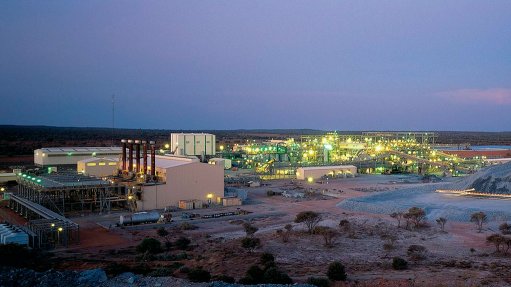Unisa, Mintek officially launch shared imaging facility
The University of South Africa (Unisa) and Mintek have officially launched their shared Materials Imaging Laboratory, as well as their recent acquisition of an X-ray microscope (XRM), which enables both institutions to carry out advanced mineral and material research.
In 2017, Unisa and Mintek entered into a memorandum of understanding (MoU) for research and collaboration across all areas of shared interest. They also recognised their mutual need for an X-ray computed topography (XCT) instrument, a non-destructive testing instrument, which works like a medical CAT scan.
Speaking at the launch on behalf of the Mintek board, Dr Sarah Mohlala explained that the XCT enabled X-rays to pass through and attenuate to an object. Attenuation involves the reduction in the intensity of the X-rays on passing through the object and is dependent on the composition and density of the object.
She said that, where a sample contained more than one substance, these substances would interact differently with the X-rays, leading to different attenuations, which enabled scientists to visualise these substances and their relationship to each other, similar to how X-rays could show whether fluids, growths, breaks or ruptures had occurred on or around bone and tissue.
Mohlala said XCT also rotated the sample so that different angles could be viewed, unlike conventional X-rays, where the subject had to be manually moved to see different angles.
She noted that Mintek had been applying XCT techniques to geological materials since 2009, partnering with the South African Nuclear Energy Corporation in 2010 to use its XCT instrument, as well as the University of Utah to use its Carl Zeiss instrument.
Between 2010 and 2012, Mintek established relationships with the University of the Witwatersrand and Stellenbosch University, which had acquired XCT machines through national research funding. In the five years prior to the MoU with Unisa, Mintek continued its work with XCT using the Council for Scientific and Industrial Research’s Centre for High-Performance Computing.
Mintek’s research and collaboration with Unisa will centre on “unlocking mineral wealth” through faster turnaround times with regard to metallurgical and processing solutions based on mineral characterisation, and the “production and optimisation of new materials for more efficient performance in various applications”, Mohlala stated.
The XRM differs from the classic XCT technology because of its “sophisticated” optical microscopy detection system, which enables high imaging resolution without relying solely on geometric magnification.
The data is collected and reconstructed using the Carl Zeiss software. “Plans are in place to directly transfer images and corresponding data to Mintek, where computational capacity is being made available for analysis and storage,” Mohlala noted.
The MoU led to the establishment of the shared Materials Imaging Laboratory, located at Unisa’s Florida campus, west of Johannesburg, as well as the process of acquiring and installing an XRM.
At the launch, Unisa’s College of Science, Engineering and Technology (CSET) deputy executive dean, Dr Mukondeleli Katumba, noted that it was a great example of mutual collaboration between academia and industry, which served the needs of both institutions, with implications for the broader mining industry.
Unisa CSET dean Professor Bhekie Mamba explained that, since 2012, Unisa had invested about R800-million of its own funds to upgrade its imaging laboratory, including R48-million for an electron microscope.
Mamba noted that the collaboration was about more than cofounding for instruments, as it was primarily about forming an effective and beneficial research relationship. “South African universities have a tendency [to form] partnerships with international institutions . . . but they cannot work with each other.” Further, he noted that the national research councils behaved in a similar manner, and that it was time to course-correct for the benefit of students, researchers and industry as a whole.
Comments
Press Office
Announcements
What's On
Subscribe to improve your user experience...
Option 1 (equivalent of R125 a month):
Receive a weekly copy of Creamer Media's Engineering News & Mining Weekly magazine
(print copy for those in South Africa and e-magazine for those outside of South Africa)
Receive daily email newsletters
Access to full search results
Access archive of magazine back copies
Access to Projects in Progress
Access to ONE Research Report of your choice in PDF format
Option 2 (equivalent of R375 a month):
All benefits from Option 1
PLUS
Access to Creamer Media's Research Channel Africa for ALL Research Reports, in PDF format, on various industrial and mining sectors
including Electricity; Water; Energy Transition; Hydrogen; Roads, Rail and Ports; Coal; Gold; Platinum; Battery Metals; etc.
Already a subscriber?
Forgotten your password?
Receive weekly copy of Creamer Media's Engineering News & Mining Weekly magazine (print copy for those in South Africa and e-magazine for those outside of South Africa)
➕
Recieve daily email newsletters
➕
Access to full search results
➕
Access archive of magazine back copies
➕
Access to Projects in Progress
➕
Access to ONE Research Report of your choice in PDF format
RESEARCH CHANNEL AFRICA
R4500 (equivalent of R375 a month)
SUBSCRIBEAll benefits from Option 1
➕
Access to Creamer Media's Research Channel Africa for ALL Research Reports on various industrial and mining sectors, in PDF format, including on:
Electricity
➕
Water
➕
Energy Transition
➕
Hydrogen
➕
Roads, Rail and Ports
➕
Coal
➕
Gold
➕
Platinum
➕
Battery Metals
➕
etc.
Receive all benefits from Option 1 or Option 2 delivered to numerous people at your company
➕
Multiple User names and Passwords for simultaneous log-ins
➕
Intranet integration access to all in your organisation


















